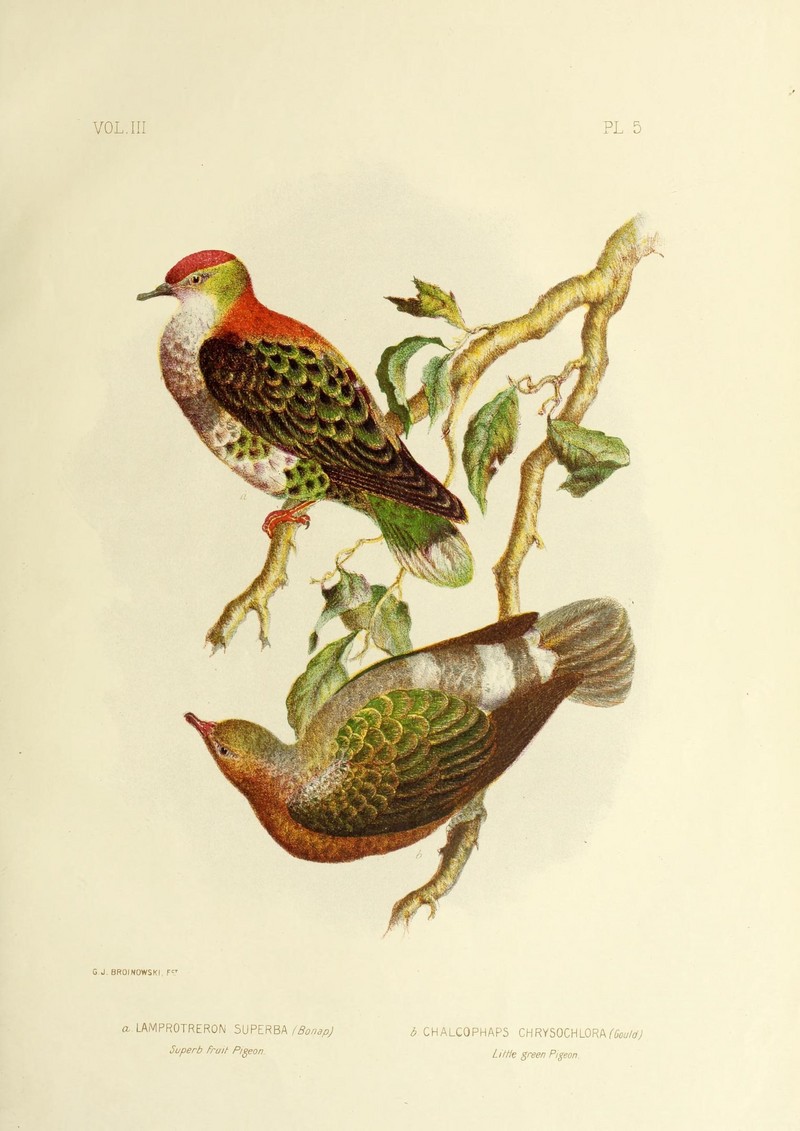|
| Query: Columba | Result: 323rd of 404 | |
superb fruit dove (Ptilinopus superbus)
| Subject: | superb fruit dove (Ptilinopus superbus)
| | Poster: | Wiki Photos (---@---.---)
| |

| Resolution: 1674x2366
File Size: 486529 Bytes
Upload Date: 2017:02:17 16:41:31
|
Description
VOL. Ill
PL 5
G J. 8ROINOWSKI, F cr
a LAMPROTRERON 5UPERBA (Bonap)
Superb fruit Pigeon.
b. CHALC0PHAP5 CHRYSOCHLORA (Gould) [suppressed; = Chalcophaps longirostris]
Little green Pigeon.
Date 1890
Source http://www.flickr.com/photos/biodivlibrary/16677698360
Author Broinowski, Gracius J.
Full title The birds of Australia,
Source: https://commons.wikimedia.org/wiki/File:The_birds_of_Australia_(16677698360).jpg
The superb fruit dove (Ptilinopus superbus), also known as the purple-crowned fruit dove (leading to easy confusion with the purple-capped fruit dove), is a medium-sized (22–24 cm long), colourful fruit-dove in the family Columbidae. Native to Australasia, the superb fruit dove lives in the rainforests of New Guinea, Australia, Solomon Islands, the Philippines and Sulawesi of Indonesia. Order: Columbiformes, Family: Columbidae, Genus: Ptilinopus, Species: Ptilinopus superbus Temminck, 1809.
|
Comments |
|---|
| | Guest |
|
Scientific Name: Ptilinopus superbus (Temminck, 1809)
Common Names:
English – Eastern Superb Fruit-dove, Superb Fruit Dove, Superb Fruit-dove, Superb Fruit-Dove
French: Ptilope superbe German: Östliche Prachtfruchttaube Spanish: Tilopo soberbio oriental
Taxonomy: Columba Superba Temminck, 1809, Halmahera. |
^o^
Animal Pictures Archive for smart phones
^o^
|
|
|